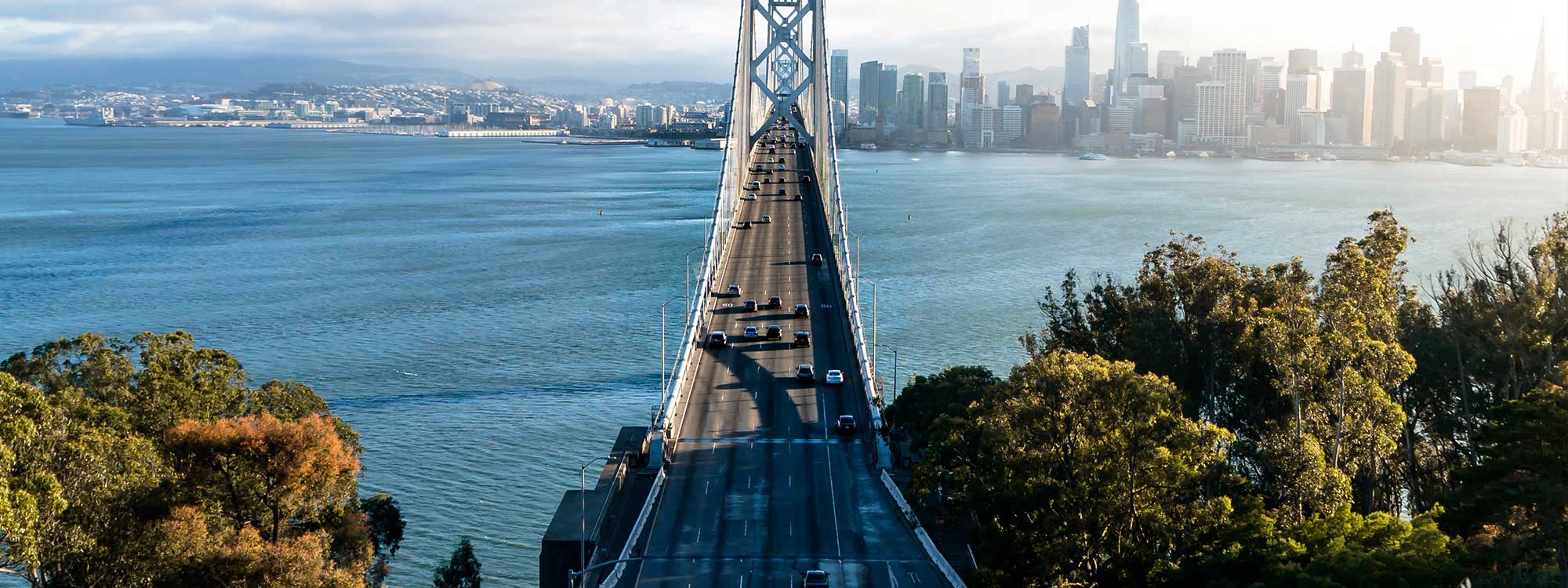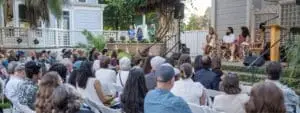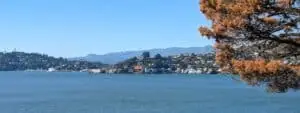As our region plans for the next 30+ years of development, the Metropolitan Transportation Commission/Associate of Bay Area Governments has implemented Plan Bay Area, an ongoing process that weaves together transportation, housing, economic and environmental strategies, alongside an expanded set of growth geographies, to advance critical climate and equity goals. We call for the Plan Bay Area 2050 process to ensure that equity, climate adaptation and mitigation, environmental preservation, and resilience are primary drivers for planning decisions.
As a key step in this process, MTC/ABAG recently released the Final Blueprint, the first step toward developing Plan Bay Area 2050.
The Pro’s
Greenbelt Alliance is impressed by many of the additions to the Final Blueprint, including:
- Transform Aging Malls and Office Parks into Neighborhoods: Permit and promote the reuse of shopping malls and office parks with limited commercial viability as neighborhoods with housing at all income levels, local and regional services, and public spaces.
- Accelerate Reuse of Public and Community Land for Mixed-Income Housing and Essential Services: Accelerate the reuse of surplus public land and land owned by non-profit institutions to meet community housing and service needs, expand small business opportunities, and create community gathering spaces.
- Implement a Statewide Universal Basic Income: To enable upward economic mobility for low-income families by improving family stability & health and increasing consumer spending.
- Invest in High-Speed Internet in Underserved Low-Income Communities: Enable greater participation in the digital economy and improve residents’ ability to telecommute and school-age children’s access to educational resources.
- Expand Access to Parks and Open Space: To direct all new growth within the region’s existing urban footprint or growth boundaries in order to prevent the conversion of agricultural and open space lands to higher greenhouse gas emitting uses.
Areas for Improvement
The Final Blueprint barely meets the state-mandated emissions reductions goals. Given the pace that climate impacts are affecting us, as a region, the Bay Area needs to go above and beyond in order to play our role by reducing planet-warming greenhouse gas emissions. If we fail to lead, the region will need to rely on a much greater investment in equitable climate resilience solutions, most of which will be natural. While Greenbelt Alliance supports the transportation strategies designed to reduce greenhouse gas emissions, our region needs to take bold actions to reduce our greenhouse gas emissions. We need to take action to achieve net-negative emissions by 2030, as 2050 will be too late based on the latest science. The proposed Climate-Safe CA 2030 targets are: 80% below 1990 GHG levels. Nature-based solutions on natural and working lands would offer additional strategies for reducing emissions and should be prioritized. We need to harness the power of nature to make our region more climate resilient.
A coalition of environmental stakeholders led by Greenbelt Alliance, Save the Bay and TOGETHER Bay Area are working together to provide the support and technical assistance needed to make the environmental section of the Blueprint more robust and responsive to today’s challenges.
Our Priorities
Establish a climate goal and vision for Bay Area conservation lands, which could complement state efforts to reach carbon neutrality and serve as a model for other regions.
The Bay Area has a strong conservation ethic, and as a consequence, there have been multiple climate benefits associated with existing and potential conservation lands and actions but have not been fully quantified. As part of the next Plan Bay Area update, MTC/ABAG can use existing tools to estimate the greenhouse gas emissions reduction benefits of natural and working lands and urban greening projects.
Why this matters: This will allow the region to leverage state policies and funding to invest in the Bay Area and support state efforts to reach climate neutrality and to inform strategies and actions to meet the goals of Plan Bay Area.
Prioritize wildfire prevention and resilience.
Because 4 million people live within the wildland-urban interface (WUI) here in the San Francisco Bay Area, the threat of wildfire will directly impact more than half of our region’s population. The Blueprint should emphasize wildfire prevention through fuels reduction coupled with ecologically sensitive vegetation management and prescribed fire to prevent the spread of flammable invasive plant species. Fire resilience can be achieved through the creation of effective defensible space around structures and home hardening.
Why this matters: This will have the additional benefit of the creation of desperately needed jobs in forestry management and restoration. Communities should also be incentivized to plan for additional growth away from the WUI to allow for effective vegetation management activities, including the use of prescribed burning practices. Given that wildfires and their embers do not distinguish between municipal boundaries, effective regional planning and coordination is imperative.
Utilize high value conservation lands for both adaptation and mitigation strategies.
Focus on high-value conservation lands, including agricultural and working lands, to create opportunities for reducing GHG emissions through conservation and restoration. Expand the vision of 2 million acres of preserved open space to 3 million acres, and encourage funding and policies to implement that vision. The Regional Advance Mitigation Program initiative is a good way to leverage the existing science and adopted conservation plans in the region to also support transportation goals.
Why this matters: This may be an opportunity to establish a state-enabled, regional Transfer of Development Rights (TDR) program to both protect open space from development and enhance urban infill opportunities. To support these strategies and improve efficacy, we recommend a review and update of the One Bay Area Grant (OBAG) program for additional funding.
Improve equity outcomes.
The Blueprint must center equity in the development of environmental policies by prioritizing the needs of Communities of Concern and other climate-vulnerable communities, responding meaningfully to their leadership in designing solutions, and leveraging resources to ensure equity-focused outcomes are tied to each strategy.
Why this matters: Compact infill and affordable housing in urban centers will help to ensure that all Bay Area residents have access to housing near job centers, transit hubs, and amenities. Ensuring access to nature and implementing green infrastructure in urban areas will support public health and encourage active transportation, leading to better climate mitigation outcomes. Coupling homeowner and renter protections with access to nature and urban greening will help to prevent these amenities from exacerbating gentrification and displacement.
We strongly encourage a shift away from engineered solutions in all of the Environmental Strategies.
We instead urge the prioritization of nature-based adaptation and resilience solutions wherever feasible; forest health actions and active ecological management of fuels in the wildland-urban interface; and use of green infrastructure solutions to a range of climate threats. Natural infrastructure projects provide more durable solutions, reduce the risk of wildland fires and flooding, provide clean drinking water and fresh food, and improve air quality, while promoting climate change resilience and supporting the ecological systems upon which we all depend.
Improve access to parks and open space, restored habitat, and urban greening projects without contributing to gentrification and displacement unless these projects are implemented alongside strategies to keep people in their homes.
We support implementation of the CASA Compact’s core recommendations to increase housing production, preserve existing affordable housing, and protect vulnerable households from displacement.
Revamp and expand the Priority Conservation Areas program.
There needs to be a deep re-assessment of and reinvestment in the Priority Conservation Areas (PCA) program that includes a robust re-calculation of costs for protection of, and investments in, natural and working lands, including trails and incentives for adoption of climate friendly farming practices. With revised guidelines, the PCA program could be a source of funding and support for resilience and nature-based solutions. The PCA program needs to be expanded to include multi-benefit projects related to climate hazards.
Emphasize adaptation and resilience through robust natural solutions to climate threats, both on the shoreline and inland.
Sea level rise mitigation strategies must address subsidence and riverine flooding in addition to shoreline protection. Focusing Plan Bay Area 2050’s efforts only on sea level rise leaves infrastructure, business centers, neighborhoods, and Communities of Concern away from the Bay shoreline susceptible to serious climate risks, including precipitation-based flooding, salt-water infiltration, extreme heat, and wildfire.
Why this matters: As a result of historic redlining practices, many low-lying, vulnerable communities are susceptible to flooding from upstream and sea level rise impacts. The Blueprint should encourage urban green infrastructure—such as bioretention, rain gardens, parks, and urban canopy—to reduce local flood risks and fluvial flooding downstream. Urban greening projects that encourage active transportation over single-occupancy vehicles should be part of a comprehensive GHG emissions reduction strategy.
Increase accountability and fidelity to implementation targets.
The success of the Regional Housing Needs Assessment process and Plan Bay Area will be dependent on MTC’s willingness to hold local jurisdictions accountable for meeting their housing and adaptation obligations. Additionally, the analysis behind the projected cost for the Environmental Strategies is unclear. We request clarification from MTC on the cost estimates to fully understand the proposed scope of these strategies and the extent to which MTC has committed to securing the necessary funding for implementation.
Expand building retrofits.
There is a great deal of change occurring in the building retrofits sector and we implore Plan Bay Area to capture this moment to take advantage of both climate mitigation strategies in addition to adaptation strategies such as decarbonizing buildings and 100% clean energy.
Expand the Climate Initiatives Programs to include active transportation, conservation, and resilience.
Presently the climate initiatives are more focused on transportation and there is not a lot of emphasis on active transportation or the value of open space. The COVID-19 crisis inspired open and healthy streets movement is showing new opportunities to promote truly complete streets and push for more transformative changes in walking and biking. There needs to be funding incentives for trails (and protected bike lanes and healthy streets), including regional trails such as the SF Bay Trail and Bay Area Ridge Trail. We would also like to see other investments that support sustainable mobility—getting more people out of gas-powered cars.
In addition, the region should explore implementing a Vehicle Miles Traveled (VMT) credit/fee program to incentivize VMT reductions in the region and use the revenues to invest in projects (including conservation projects) that reduce GHG emissions.
Maintain and enhance urban growth boundaries to preserve and protect high-value conservation lands and focus new developments in infill areas near transit.
Utilize urban growth boundaries (UGBs) as fire reduction strategies through defensible space. Encourage infill development where existing infrastructure exists and discourage development in the WUI for fire safety. There needs to be a more robust investment in achieving this, given the multiple benefits provided from UGBs.
The Final Blueprint will be approved by the MTC commissioners on September 23. Once the Blueprint is approved, Greenbelt Alliance looks forward to working closely with MTC staff and a network of environmental organizations across the Bay Area on the implementation of its strategies.
For more information, you can review the full Final Blueprint Strategies here.
Photo: Fran via Unsplash





